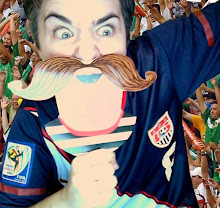We're nearing the end of the supposedly "easy" P-Projects and yesterday we got instructions for the Tusche Wash Tests.
Okay... so some of you may be wondering what tusche is... besides a term for someone's backside. Lithographic tusche (Usually pronounced TOOOSH), is a greasy drawing material that comes in three different forms: Paste, Stick, and Liquid. Tusche can be dissolved with either water or solvents and can be applied with a brush or a pen. Most people like to use it for more painterly effects.
Here are a few examples of the tusches we are using. The one in the can is the paste, which comes solid. You add small amounts of water (or solvent) in the can and stir it up with the brush until you get the consistency you want. The stick is kind of like a fat crayon. To use it, you rub it on the bottom of a plate and then liquefy it with water.
The purpose of these next projects is for us to get familiar with the different brands and types of tusche and to learn how to process them on the stone and plate. Tusche washes are usually so delicate that it can be hard to etch them and print them without losing the detail.
We are doing two separate sets of tests in these projects. First, we are sampling 10 strengths of five different types of water-based tusche on both a stone and aluminum plate. Next, we will prepare another plate and stone and explore variations in solvent-based tusches.
For each brand or type of tusche, we first mix up a solid concentrated version, then add drops of the concentrate to small beakers with water. We start with just 10 drops to about 20mL of water, then 20 drops, and so on. Here is Valpuri going cross-eyed from counting drops:
Here is Yuli's stone in progress. Each horizontal row is a different type of tusche. You can see how it starts on the left with the concentrate, then the 90 drops, and so on.
Once the water evaporates, the grease particles in the tusche will settle onto the stone. Here is a close-up of my stone:
After the first application dries, we have to go back over a small part of each blob with a second pass. This will give us an idea of how the stone or plate might react with more than one coat of tusche. Here's Celina adding her second coat:
Putting the tusche on the stone or plate is the easy part! Tomorrow we'll get a demo on how to do our first etch.
Wednesday, September 5, 2007
P-5 and P-6: Tusche Wash Tests
Posted by
Porkchop
at
5:45 PM
![]()
Subscribe to:
Post Comments (Atom)





4 comments:
Lithography sounds so much like chemistry class, it makes me want to cry.
-CF
Yeah! And I haven't even mentioned testing the pH of the water we mix in with our tusche!
Thanks for the pronunciation clarification!!
Heath
Do you have a photo of the proof you pulled?
Love your Posts!
Post a Comment